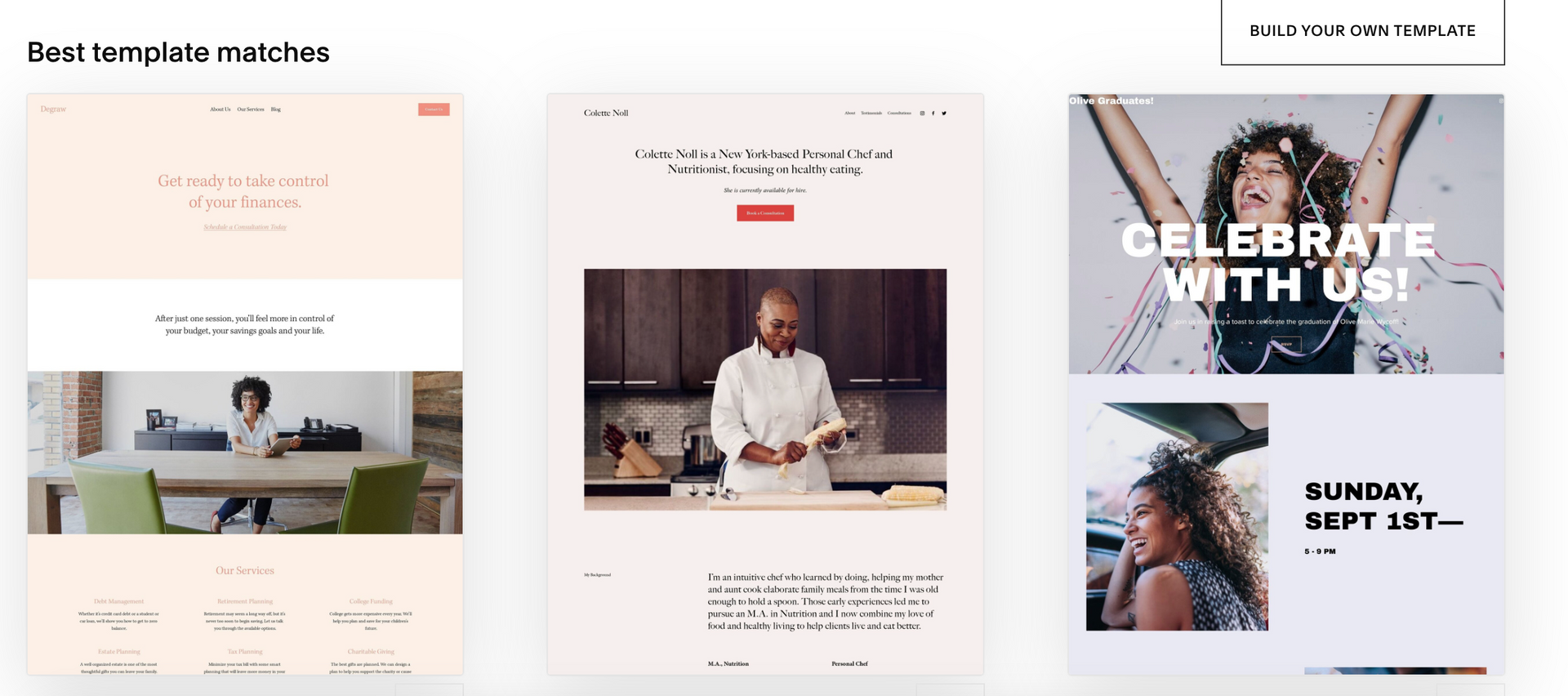Squarespace vs Wix: Which one is best for building your website?
One of the most important aspects of building a website is choosing a platform that is user-friendly. As a service provider, you want to be able to focus on your business and not waste time on the technical aspects of website design. A platform that is easy to use and navigate can save you time and frustration, allowing you to focus on what really matters - serving your clients and growing your business.
What is Squarespace and how does it work?
Squarespace is a popular website builder that offers a variety of templates and features for building a website. Squarespace is known for its sleek and modern designs, and its platform is easy to use for beginners.
What is Wix?
Wix is a popular website builder that offers a range of features and customization options. It's a drag-and-drop platform that uses artificial design intelligence (ADI) to help you create a website quickly. Wix offers hundreds of templates to choose from, making it a popular choice for small businesses and entrepreneurs.
Comparing Squarespace vs Wix
Both Squarespace and Wix are website builders that offer easy-to-use platforms for creating a website. However, they differ in various aspects. Let's take a look at how they compare in terms of ease of use, design, templates, widgets, integrations, blog, and pricing.
Ease of use
- Squarespace: Known for its user-friendly interface and elegant design, Squarespace is an excellent choice for beginners and those who prioritize aesthetics. The platform offers a straightforward drag-and-drop editor.
- Wix: Equally user-friendly, Wix provides a wide range of customizable templates and a simple drag-and-drop builder. It's also suitable for beginners.
Design
- Squarespace is renowned for its stunning, professionally designed templates. If you want a visually appealing website without much customization, this is an ideal choice.
- Wix also offers a wide variety of templates, but they may not be as design-focused as Squarespace's. It's a great choice if you prefer a basic website.
Templates
- Squarespace: Offers a curated selection of templates that emphasize design aesthetics. Choosing the right one is made easier due to the smaller, high-quality range.
- Wix: Provides a vast selection of templates, including options for various industries. This variety allows for highly customized sites but can be overwhelming for beginners.
SEO optimization
- Squarespace: Squarespace offers solid SEO features, including clean HTML markup and customizable meta tags. It's suitable for basic to intermediate SEO needs.
- Wix has improved its SEO capabilities over the years, making it more competitive. It provides tools for optimizing on-page SEO as well.
Integrations
- Squarespace: Offers a limited number of integrations and extensions, which can be an advantage for those who prefer a streamlined experience but may not meet specialized requirements.
- Wix: Features a robust app market with a wide variety of integrations. This flexibility allows users to extend functionality according to their specific needs.
Pricing
- Squarespace: Squarespace's pricing plans are straightforward and all-inclusive, covering hosting, templates, and essential features. It's ideal for budget predictability.
- Wix: Wix offers a free plan with Wix-branded domains but comes with ads. Premium plans vary in features, and while it's budget-friendly, costs can accumulate as you add more features.
Tips for choosing the best platform to build your website for a service-based business
Choosing the best platform to build your website is crucial for the success of your service-based business. Here are some tips to help you make the right decision:
Identify your website goals
Before you start looking for a website builder, you should first identify what you want your website to achieve. Do you want to showcase your portfolio, sell products, or generate leads? Once you know what you want your website to achieve, you can choose a platform that best aligns with those goals.
Consider your budget
Different website builders have different pricing plans, and you need to choose one that fits your budget. Some platforms offer free plans, while others charge a monthly or yearly fee. Keep in mind that free plans may have limited features, so you may need to upgrade to a paid plan to access all the features you need.
Evaluate the ease of use
A user-friendly platform is essential, especially if you don't have web design experience. Look for platforms with intuitive interfaces and drag-and-drop editors that allow you to easily customize your website without the need for coding.
Analyze the available templates and design options
Your website's design plays a crucial role in its success. Look for platforms that offer a wide range of templates and design options that allow you to create a website that reflects your brand and style.
Check for available integrations
If you plan to integrate your website with other tools, such as email marketing software, course platforms, or social media platforms, make sure the platform you choose offers the necessary integrations.
Research customer support
In case you encounter any issues while building your website, it's essential to have reliable customer support. Look for platforms that offer multiple support channels, such as phone, email, or live chat, and check their response times and customer reviews.
By considering these factors, you can choose a website builder that suits your service-based business needs and goals. Remember that a well-designed and user-friendly website is crucial for establishing your online presence and attracting new clients.
So bottom line Squarespace vs Wix: Which is right for you?
When it comes to choosing between Squarespace vs Wix, the decision ultimately comes down to your specific needs and preferences. If you value design flexibility and want a completely custom website, Squarespace is the way to go. On the other hand, if you prioritize ease of use and want a basic budget friednly website Wix may be a better choice for you.
It's important to note that both Squarespace and Wix offer free trials, so you can test out each platform and see which one works best for you.
Stop looking for the perfect platform, because it doesn't exist.
At Green Studio, we understand that building a website can be overwhelming and frustrating, especially when dealing with all these limitations.
By working with me, you won't have to worry about learning a new platform or dealing with the technical aspects of website design. I'll take care of everything for you, allowing you to focus on what really matters - serving your clients and growing your business. Learn more about our website in a week service here.

* AI Disclosure: This content may contain sections generated with AI with the purpose of providing you with condensed helpful and relevant content, however all personal opinions are 100% human made as well as the blog post structure, outline and key takeaways.
* Affiliate Disclosure: Some of the links on www.nataliamaganda.com may contain affiliate links meaning that I will get a commission for recommending products at no extra cost to you.

hello! i'm natalia
Latina, web design expert for mental health professionals.
I help ambitious life coaches, therapists and holistic leaders amplify their magic, gain visibility, and simplify their marketing efforts through strategic web design and content.












